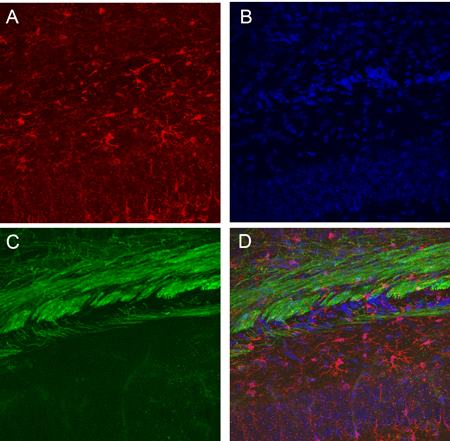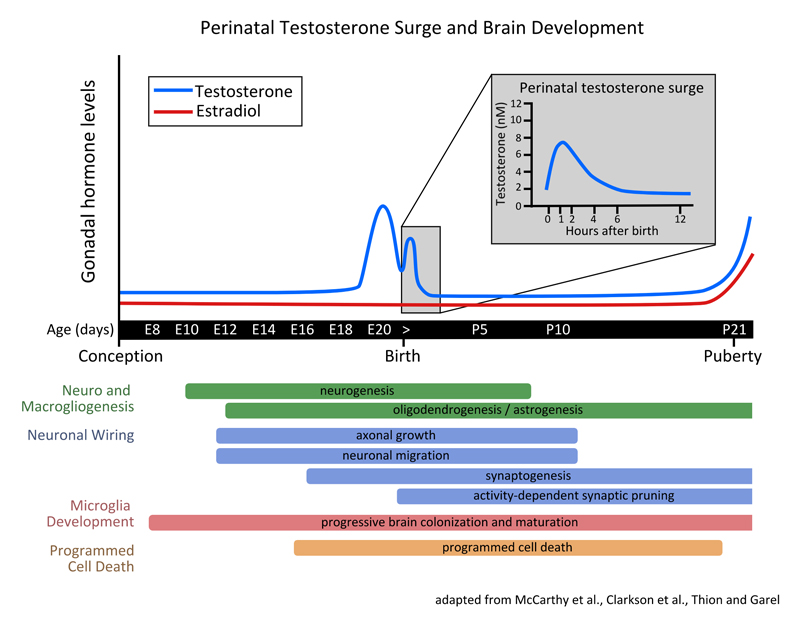Xenobiotic Disruption of the Perinatal Testosterone Surge and Neurobehavioral Development
 Endocrine active chemicals (EACs) have been increasingly implicated in neurobehavioral and reproductive disorders, particularly those with sex-biased prevalence rates. Over 900 endocrine active chemicals have been identified. As such, humans are consistently exposed to mixtures of EACs. Importantly, there is increasing evidence that mixtures of low-dose EACs can act synergistically, even via different mechanisms, to converge on downstream targets and result in a spectrum of reproductive deficits known as the male reproductive syndrome. Whether such cumulative influence extends to the central nervous system (CNS) and behavior is unknown. The CNS is a primary target of EACs. Given its integrated function, the CNS may be particularly vulnerable to multiple toxicant hits that, despite different direct molecular targets, may converge downstream on neural networks and behavior.
Endocrine active chemicals (EACs) have been increasingly implicated in neurobehavioral and reproductive disorders, particularly those with sex-biased prevalence rates. Over 900 endocrine active chemicals have been identified. As such, humans are consistently exposed to mixtures of EACs. Importantly, there is increasing evidence that mixtures of low-dose EACs can act synergistically, even via different mechanisms, to converge on downstream targets and result in a spectrum of reproductive deficits known as the male reproductive syndrome. Whether such cumulative influence extends to the central nervous system (CNS) and behavior is unknown. The CNS is a primary target of EACs. Given its integrated function, the CNS may be particularly vulnerable to multiple toxicant hits that, despite different direct molecular targets, may converge downstream on neural networks and behavior.
Studies from our laboratory provide evidence that a mixture of EACs can increase testosterone (T) in males at birth, a critical window of neurological and reproductive sexual differentiation, and induce male-specific behavioral deficits in adulthood. Given the increased incidence rates of children’s male-biased neurobehavioral deficits with reproductive malformations, understanding the lifelong consequences of EAC mixture-induced developmental T changes on behavioral function is critical: environmentally-relevant EAC mixtures may be a significantly underappreciated risk factor for neurobehavioral disorders. These studies provide the platform for research questions focused on how early androgen disruption reprograms sexually-dimorphic CNS structure and behavioral development.
